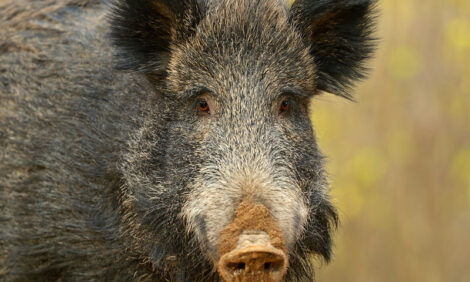



Pork Industry Structure Study, 2004
US - By John Lawrence and published in the Iowa Farm Outlook. Since 1974 Glenn Grimes, University of Missouri, has conducted a survey every 3-4 years of the US pork industry. Iowa State University has participated in the analysis since the mid-1990s. The latest version of this analysis based upon 2003 has been completed.Annual Pigs Per Breeding Animal Continues Steady Increase
While changes to the pork industry are significant and obvious over the long-term, the changes since the last survey released in 2001 are less dramatic. I encourage you to read the full report, but offer some of the highlights below.
When Grimes first surveyed producers in 1974 the largest size category marketed 5,000 hogs a year or more. We estimated that over 87% of the hogs marketed in 2003 came from operations selling at least 5,000 head. Today the largest size group markets 500,000 head a year. These 25 firms with numerous production facilities and contract growers accounted for 40% of US hog marketings in 2003. The next size group marketing 50,000 – 500,000 head included 134 firms and accounted for 19% of the marketings. Thus, combined these 159 firms are estimated to market 59% of all the hogs in the US.
Table 1 shows the trend in the share of hogs marketed by size of operation over the last 15 years based on these surveys. While everyone remembers the low prices and financial hit of 1998, much of the structural shift occurred between 1994-1997 when larger firms expanded faster than smaller firms exited. Since 2000 the largest category increased 8 percentage points and the under 5,000 head categories lost share. The 5-10 and 10-50 groups were relatively stable.

The largest firms account for an estimated 59% of US marketings and approximately half of the production from these firms being wholly or partly owned by a supplier or packer (Table 2). The largest influence is packer ownership of the largest firms.

The survey asked producers about their plans for the future. As with earlier surveys every size group plans to expand, but history has shown that producers are not always able to follow through with their plans. Table 3 shows what producers are planning for 2006 compared to 2003 and how they have done in the past in reaching their goals.

Most of the growth that is planned is to occur by raising more hogs in the same facilities. Constructing new facilities accounted for 7-13 percent of the planned growth depending on the size category. However, the 500,000+ category also mentioned contracting for more space and buying existing facilities as an important part of their growth plan. Thus, the overall increase in supplies may not be as dramatic as the 2003-06 plans would indicate. A key determinant in expansion plans is profitability. Table 4 is a reflection of the cost of production and impact of prices on business plans.

Note that the smallest and largest size categories have similar staying power at prices below $37 and that all but the 50-500 category has similar stay-in when under $40. Where there appears to be more difference is in the percent of operations that exit if prices do not average $43 or higher. Table 5 weights the data by marketings to get a estimate of the percent of marketings that will stay in business at the various price levels. Note that approximately 6% of the production is expected to drop out if prices average below $46. Another 14% leaves at prices below $43. The $43-45 price range would appear to be an estimate of longer term prices if corn averages $2.40/bu. At less than $43 enough production leaves to cut supplies and boost prices. At prices over $45 relatively little production leaves and the planned expansion will keep prices from moving much higher.

Source: Iowa Farm Outlook - September 2004








